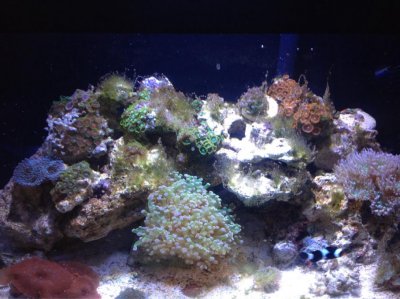I have a 20L that's been established for nearly a year. I'm battling hair algae and green bubble algae. The GBA has nearly taken over my tank. It is everywhere. I'm assuming in my attempt to remove it I've popped quite a few accidentally, which would be the reason for such an outbreak. I'm at my wits end. I bought 3 emerald crabs, and several of my zoas have been closed since I added the crabs. One of them seems damaged now and appears to be melting away. I'm finding bright orange pieces of my solar flare zoa floating around. Out of desparation to save my zoas I have set up a 10g to house them in until I see what the crabs can do. My question is, should I salvage the corals, toss my lr and start over? It's really bad.
A little info on the tank...
2 circ pumps
AC 70 running chemipure elite and phosguard.
Weekly 4/5 gallon water changes using recently purchased RODI unit, 0 TDS, Red Sea coral pro salt mix. Was using distilled water from grocery store and ro water from lfs before buying the rodi unit.
Dual T5HO with ATI bulbs on 7 hours day. Blue evening LED strip on for 3 hours at night.
1/4" mesh screen top.
What could be the issue?
A little info on the tank...
2 circ pumps
AC 70 running chemipure elite and phosguard.
Weekly 4/5 gallon water changes using recently purchased RODI unit, 0 TDS, Red Sea coral pro salt mix. Was using distilled water from grocery store and ro water from lfs before buying the rodi unit.
Dual T5HO with ATI bulbs on 7 hours day. Blue evening LED strip on for 3 hours at night.
1/4" mesh screen top.
What could be the issue?



















